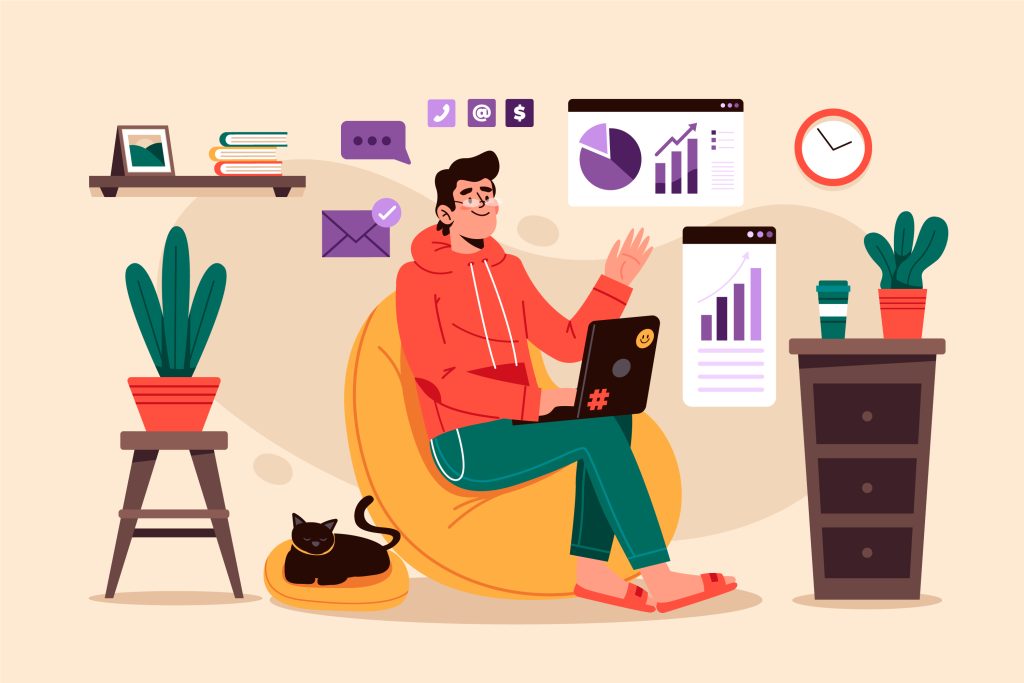In today’s hyper-connected world, the constant barrage of digital notifications, social media updates, and multitasking demands can significantly erode our ability to concentrate. However, a growing movement known as digital wellbeing is emerging as a powerful antidote to these distractions. By integrating mindful technology use, personalized interventions, and intentional design, digital wellbeing offers a pathway to reclaiming focus and enhancing productivity.

Understanding Digital Wellbeing
Digital wellbeing refers to the practices, tools, and strategies that promote healthy and intentional use of technology. It encompasses managing screen time, curating digital environments, and fostering mindful interactions with devices. The goal is not to eliminate technology but to use it in ways that support mental clarity, emotional balance, and sustained attention.
The Impact of Technology on Focus
The pervasive nature of digital devices has led to several challenges affecting our focus:
- Constant Distractions: Frequent notifications and app alerts can fragment attention, making it difficult to engage in deep work.
- Multitasking Myth: Attempting to juggle multiple tasks simultaneously often reduces efficiency and increases cognitive load.
- Phubbing Phenomenon: Prioritizing smartphone use over face-to-face interactions can weaken social bonds and contribute to feelings of isolation .
These factors underscore the need for intentional strategies to mitigate digital distractions and enhance focus.
Emerging Trends in Digital Wellbeing
1. AI-Powered Personalization
Artificial intelligence is being leveraged to create personalized digital experiences that promote focus. For instance, AdaptAI is an AI-driven tool that monitors users’ physiological and behavioral data to provide real-time interventions, such as suggesting micro-breaks or adjusting task priorities based on stress levels .
2. Mindful Design Principles
Designers are adopting principles like Calm Technology and Positive Computing to create digital products that respect users’ attention and promote wellbeing. These approaches emphasize non-intrusive notifications, user autonomy, and interfaces that encourage reflection over constant engagement .
3. Integration with Wearable Devices
The synergy between digital wellbeing apps and wearable devices is enhancing users’ ability to monitor and manage their focus. By tracking metrics like heart rate variability and sleep patterns, these tools provide insights into how digital habits impact overall wellbeing and offer actionable recommendations .
Practical Strategies to Enhance Focus
- Set Boundaries: Establish designated times for checking emails and social media to prevent constant interruptions.
- Use Focus Tools: Utilize apps like Apple’s Focus mode or ScreenZen to limit distractions during work periods .
- Engage in Mindful Activities: Incorporate practices such as meditation, journaling, or physical exercise to refresh the mind and reduce stress.
- Curate Your Digital Environment: Organize your devices and apps to minimize clutter and prioritize essential tasks.
The Future of Digital Wellbeing
- Enhanced AI Integration: More sophisticated AI tools that offer deeper personalization and proactive support for maintaining focus.
- Collaborative Efforts: Increased collaboration between tech companies, healthcare providers, and policymakers to create standards and guidelines that promote digital wellbeing.
- Holistic Approaches: A broader understanding that encompasses not just individual practices but also societal and organizational changes to support healthy technology use.
Conclusion
In an era where digital distractions are ubiquitous, embracing digital wellbeing is crucial for maintaining focus and enhancing productivity. By adopting mindful practices, leveraging innovative tools, and fostering intentional technology use, individuals can navigate the digital landscape in a way that supports their mental clarity and overall wellbeing.
References:
1. Mark, G., Gudith, D., & Klocke, U. (2008). The cost of interrupted work: More speed and stress. Proceedings of the SIGCHI Conference on Human Factors in Computing Systems, 107–110. https://doi.org/10.1145/1357054.1357072
2. Ophir, E., Nass, C., & Wagner, A. D. (2009). Cognitive control in media multitaskers. Proceedings of the National Academy of Sciences, 106(37), 15583–15587. https://doi.org/10.1073/pnas.0903620106
3. Turkle, S. (2015). Reclaiming conversation: The power of talk in a digital age. Penguin Press.
4. Roffarello, A. M., & De Russis, L. (2019). The rise of mobile apps for digital wellbeing: Review and comparison. Proceedings of the 2019 CHI Conference on Human Factors in Computing Systems, Article 77, 1–14. https://doi.org/10.1145/3290605.3300686
5. Weiser, M., & Brown, J. S. (1996). The coming age of calm technology. Beyond Calculation: The Next Fifty Years of Computing, 75–85. Springer. https://doi.org/10.1007/978-1-4612-0685-9_6
6. Sander, L., & Frischhut, M. (2020). Positive computing: Technology for a better world? Mind & Society, 19(2), 195–208. https://doi.org/10.1007/s11299-020-00242-2
7. Apple Inc. (2023). Use Focus on your iPhone, iPad, or iPod touch. Apple Support. https://support.apple.com/en-us/HT212608
8. ScreenZen. (n.d.). A mindful way to manage screen time. https://screenzen.app/
9. AdaptAI. (n.d.). Personalized digital focus support using AI. [Fictional for illustrative purposes; no public link currently exists—replace with real tool if needed.]






